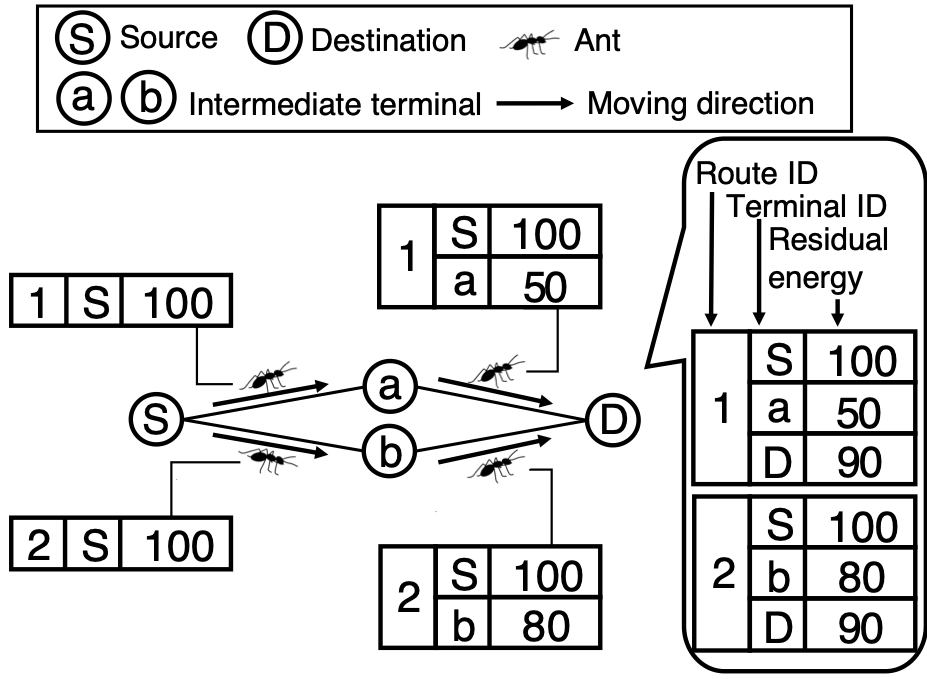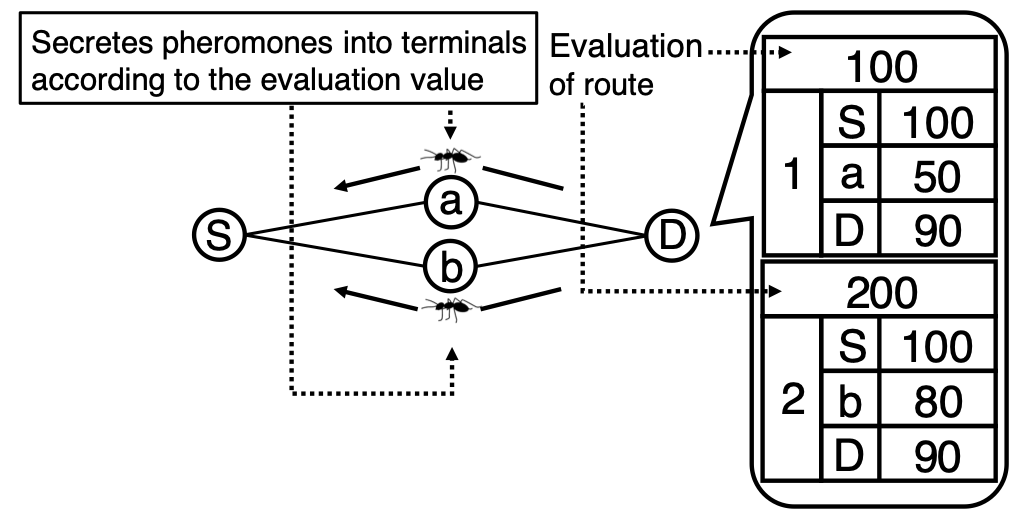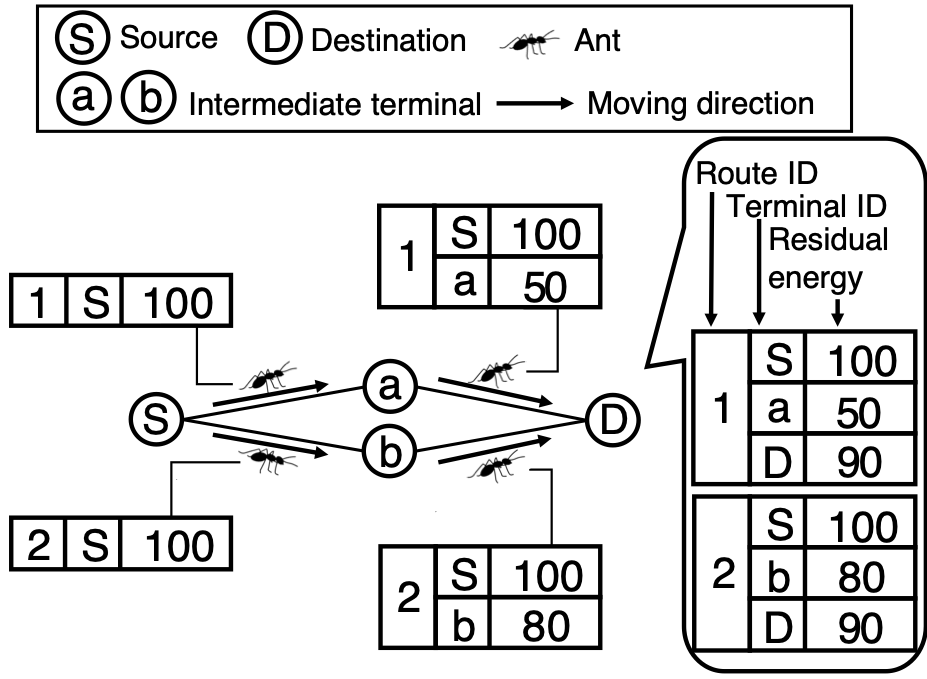Routing in Wireless Ad Hoc Networks
As described in the previous part, terminals in ad hoc networks play multiple roles such as source, destination, and relay terminals to cooperatively forward/relay data to the final destination. Moreover, the terminals generally have mobility and the autonomous and distributed operation manners make it difficult to apply routing protocols used on the Internet since the communication environments are completely different from the ones on the Internet. Therefore, wireless ad hoc networks require environmental-specific routing protocols to prevent the networks from performance degradation due to their communication nature. A lot of works have been done and they proposed a bunch of routing protocols which can be classified into three types as shown in the following.
- Proactive Routing (Table-Driven)
- Reactive Routing (On-demand)
- Hybrid Routing
The major difference between proactive and reactive routing is the timing of route establishment which the proactive routing protocols establish and maintain routes in advance of actual data transmission whereas the reactive routing protocols establish routes after communication demands arose in source terminals. The hybrid routing protocols generally combines the advantages of the former two protocols to eliminate the disadvantages.
On the other hands, the biggest drawback to the conventional routing protocols is to continuously utilize establish routes until the routes become unavailable. Although this would not be a fatal issue in stable and static environments, more dynamic environments such as ad hoc networks face performance degradation since established routes are becoming obsolete in a short time.
Then, our laboratory researches routing protocols with a novel routing paradigm called “Opportunistic Routing”. The most characteristic feature of opportunistic routing protocols is its broadcast-based forwarding strategy which does not rely on a specific end-to-end route. Therefore, its simultaneous forwarding can forward packets to multiple receivers and the receivers autonomously make a forwarding decision based on a metric such as hop count. In other words, opportunistic routing protocols enable to forward packets with routes that have a better communication environment and its multipath-based forwarding also contributes to improve the reliability and communication efficiency.
Our laboratory researches the following themes to realize efficient communication in wireless ad hoc networks with the flexible adaptability of opportunistic routing.
- Routing information collection for forwarding eligibility confirmation
- Forwarding eligibility confirmation according to communication environments
- Suppress the load increased by the broadcast nature
- Network-driven opportunistic routing
We also research technologies to apply opportunistic routing to practical environments with a company as joint research.
センサネットワークにおける省電力ルーチング
無線センサネットワークでは,センシング領域に配置された複数のセンサ端末からシンクノードと呼ばれる情報集約を行う装置まで,マルチホップ通信を利用したデータ送信が行われています.また,センサ端末は一般的に小型電池などの限られた電力源によって駆動されており,その交換等が物理的・コスト的に困難である場合が多く想定されます.そのため,無線センサネットワークでの通信では,可能な限り各端末の消費電力を抑制し,ネットワークを長期間維持することが求められます.
従来より,無線センサネットワークでの通信方式として様々なルーチングプロトコルやデータ転送方式などが考えられてきていますが,より綿密な制御を行うためには,適応的に通信環境に即した経路や通信タイミングを設定する必要があります.そこで本研究室では,蟻コロニー最適化(ACO:Ant Colony Optimization)における最適化の動作をルーチングに応用する手法について検討を行っています.一般的にACOは,送信元から宛先までの最短経路を探索する際に用いられていますが,研究室で実施している検討ではその最適化のための動作を応用し,端末の消費・残留電力が時々刻々と変化するネットワークにおいて,適応的に経路選択を行うルーチングプロトコルの提案を行っています.





